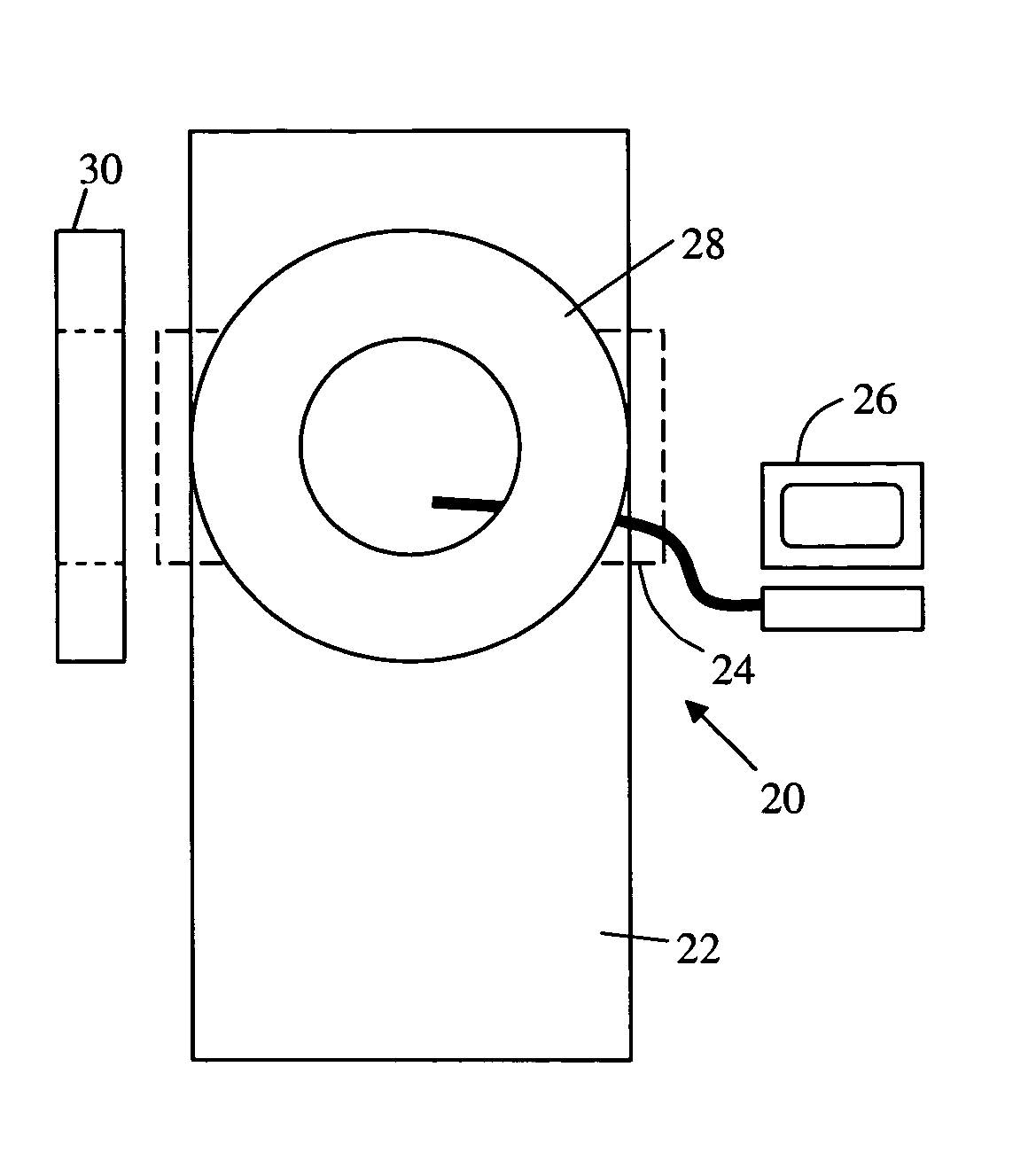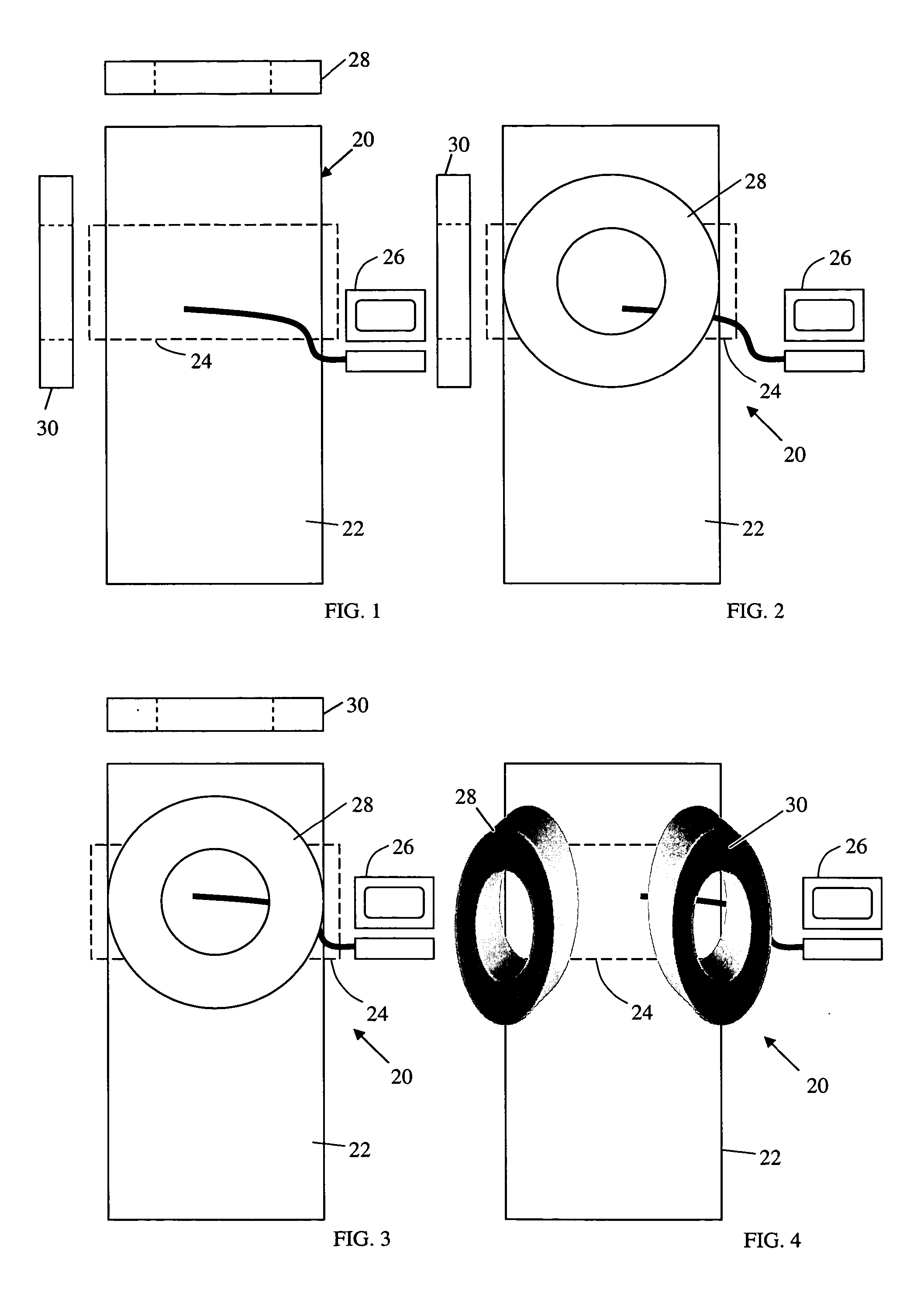Magnetic resonance imaging and magnetic navigation systems and methods
a magnetic navigation system and magnetic resonance imaging technology, applied in the direction of magnetic variable regulation, instruments, applications, etc., can solve the problems of not being able to magnetically orient a medical device in a direction, devices using static magnetic fields, etc., to achieve strong and uniform effects
- Summary
- Abstract
- Description
- Claims
- Application Information
AI Technical Summary
Benefits of technology
Problems solved by technology
Method used
Image
Examples
second embodiment
[0020] As illustrated in FIG. 5, this invention indicated generally as 50 comprises a patient support 52. The system 50 also comprises an MR imaging apparatus 54 for imaging the operating region with static field applied to the operating region. The system 20 also comprises magnetic navigation system 56 for selectively controlling the magnetic moment generated at the distal end of the medical device to orient the distal end of the medical device with respect to the static field. The system 50 further comprises at least a first movable magnet 58, movable between at least a first position and a second position. When the magnet 58 is in its first position, it creates a first static field B1 sufficient for MR imaging of the operating region, and for navigating in the operating region. When it is desired to magnetically navigate in a direction with a component in a plane perpendicular to the first static field, the magnet(s) 58 are moved to its second position to create a second static f...
third embodiment
[0022] A combined MR imaging and magnetic navigation system in accordance with this invention indicated generally as 100, is shown in FIGS. 6, 7, and 8. The system 100 comprises a support 102 for supporting a subject during imaging and navigation procedures. The system 100 further comprises an MR imaging system 104 for imaging an operating region with a static magnetic field applied to the operating region. The system further comprises a magnetic navigation system 106 for selectively controlling the magnetic moment generated at the distal end of the medical device to orient the distal end of the medical device with respect to a static magnetic field applied to the operating region. (This is typically achieved by controlling electric currents in one or more coils in the distal end of the medical device, or otherwise activating and deactivating magnetic elements in the distal end of the medical device.)
[0023] The system 100 also includes at least one magnet 106 for applying a static m...
first embodiment
[0026] In the first embodiment the first magnet 24 is operating to apply a first static magnetic field to the operating region in a subject on the support 22. This first static field is used for MR imaging and for magnetic navigation. An elongate medical device is oriented with respect to the first static magnetic field by changing the magnetic moment at the tip of the device. Typically the devices is provided with one or more (magnetic) coils (or other magnetic elements) at its distal tip, and the magnetic moment at the tip is controlled by controlling the currents in the coils.
[0027] When it is desired to turn the distal end of the device in a direction with a component in the plane perpendicular to the first static magnetic field, the first magnet 24 is turned off, and the second magnet 26 is turned on to establish a second magnetic field in a second direction different from the first direction. The MR imaging can continue, using this second magnetic field, and because the direct...
PUM
 Login to View More
Login to View More Abstract
Description
Claims
Application Information
 Login to View More
Login to View More - R&D
- Intellectual Property
- Life Sciences
- Materials
- Tech Scout
- Unparalleled Data Quality
- Higher Quality Content
- 60% Fewer Hallucinations
Browse by: Latest US Patents, China's latest patents, Technical Efficacy Thesaurus, Application Domain, Technology Topic, Popular Technical Reports.
© 2025 PatSnap. All rights reserved.Legal|Privacy policy|Modern Slavery Act Transparency Statement|Sitemap|About US| Contact US: help@patsnap.com



